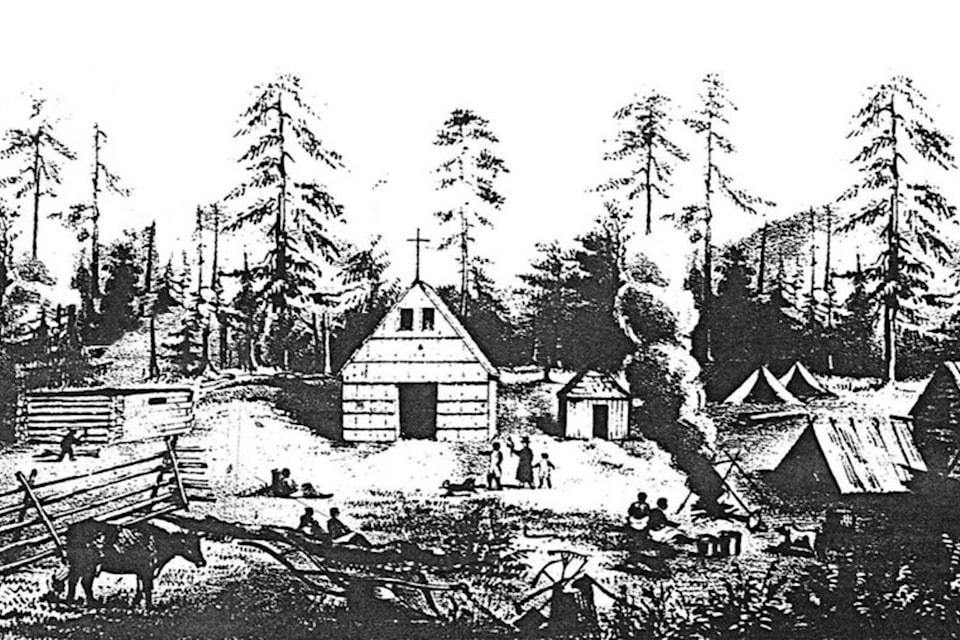By happenstance, 237 pages of letters written by Italian born Jesuit priest, Father Giovanni Nobili from 1845 to 1847 arrived by email from a friend and author in Williams Lake.
These documents, which have yet to be read by most historians in the province, had been in the Vatican vaults until the Tsilhqot’in First Nation was able to acquire them several years ago for the Xeni Gwet’in lands claim court case. Their legal team, Woodward and Company, translated the letters from Italian into English.
Father Nobili (1812-1856) was the second missionary to arrive in the province’s interior. His objective was to continue the work of his predecessor, Quebec born Father Modeste Demers. He landed in Fort Vancouver at the mouth of the Columbia River in late 1844, where he ministered the Hudson’s Bay employees and learned some Indigenous dialects. In June 1845 he headed east to Fort Wallawalla, Washington and from there he joined a small fur brigade heading north into New Caledonia (the first name assigned to British Columbia, although used by Nobili to describe the region north of the Shuswap).
To find relevant sections of the letters, it is necessary to wade through reams of religious doctrine, as Nobili’s goal was to do God’s will by saving the Indigenous people from the devil. He was called a “black robe” and was surprisingly well received by all the tribes. He wrote, “There is not a single nation or tribe that does not love me greatly and ask to receive religious instruction: to a higher or lesser degree, there is hope of good fruits for each one on them, if a minister of the Lord is there to sow the seeds of the divine word.”
Read more: Column: 80-year-old scrapbook provides insightful look at Shuswap history
Read more: ‘Fascinating, richly detailed’: Local history book, the Shuswap Country, ready to launch
Nobili explained how the Indigenous population had been much higher, but it had been drastically reduced due to diseases. He interpreted this loss as due to “God’s justice, preordained for the just punishment of these sensual peoples seems to have arrived.” Adding to their woes, the tribes were suffering greatly from famine in 1845 due to a collapse in the salmon fishery. His solution was to establish “Reductions,” the term used for Christian settlements, such as the ones the Jesuits created in South America.
During his stay at the Hudson’s Bay Company Fort in Kamloops in 1846, he wrote about the land just west of the Shuswap Lake (called then the Upper Lake) and described how it would be ideal for a settlement: As far as the land is concerned, there is good land in several areas, and, since the climate is milder, it’s suitable for growing potatoes just about anywhere, and in some places, it could grow barley, wheat, and the like; however, there is only one location where the conditions described earlier can be found. This place lies one day’s journey East of Fort Shoushwap, along the shores of the lake from which the clear and extremely calm waters of the Thompson River issue; in season, the salmon run up both. The soil is excellent and the place is pleasant.
Nobili went on to describe how the tribe had been successfully growing potatoes for some years, was trading part of their harvest with neighbouring tribes and “even with the whites and the Lord of the Fort.” He finished by exclaiming, “…after having instructed them for over one month and a half, I will baptize their Great Chief and his wife. And that they are, “…extremely attached to their minister of God and greedy for the divine words.”
The “Great Chief” he referred to was Silhowtken (the name Mary Balf used in her history of Kamloops) who after his baptism, received the name Adam. Nobili referred to the Hudson’s Bay Thompson River Post as the “Shoushwap Fort,” and its chief factor as the “Lord” of the fort.
Part Two will include more details about Nobili’s mission.
newsroom@saobserver.net
Like us on Facebook and follow us on Twitter
